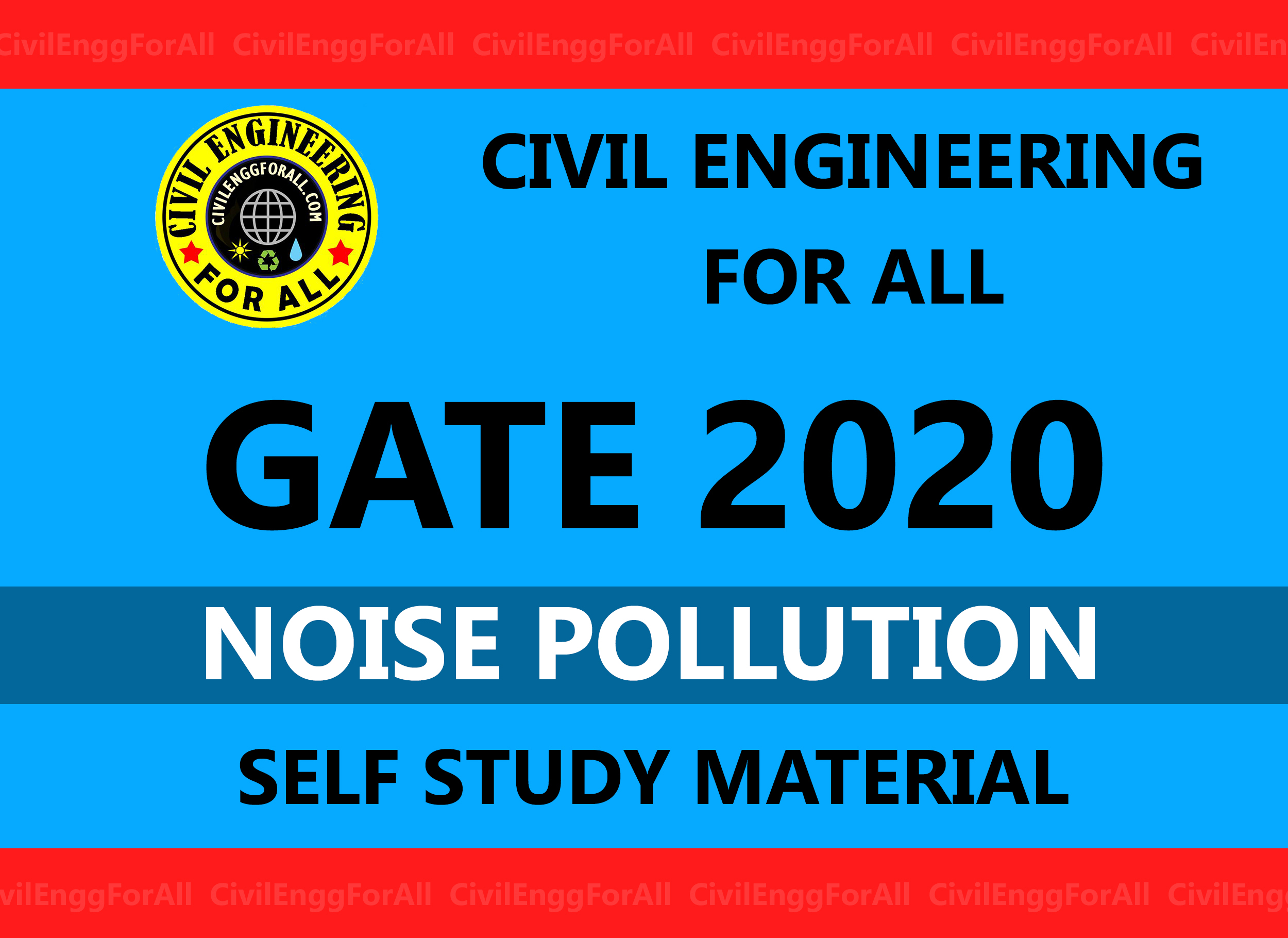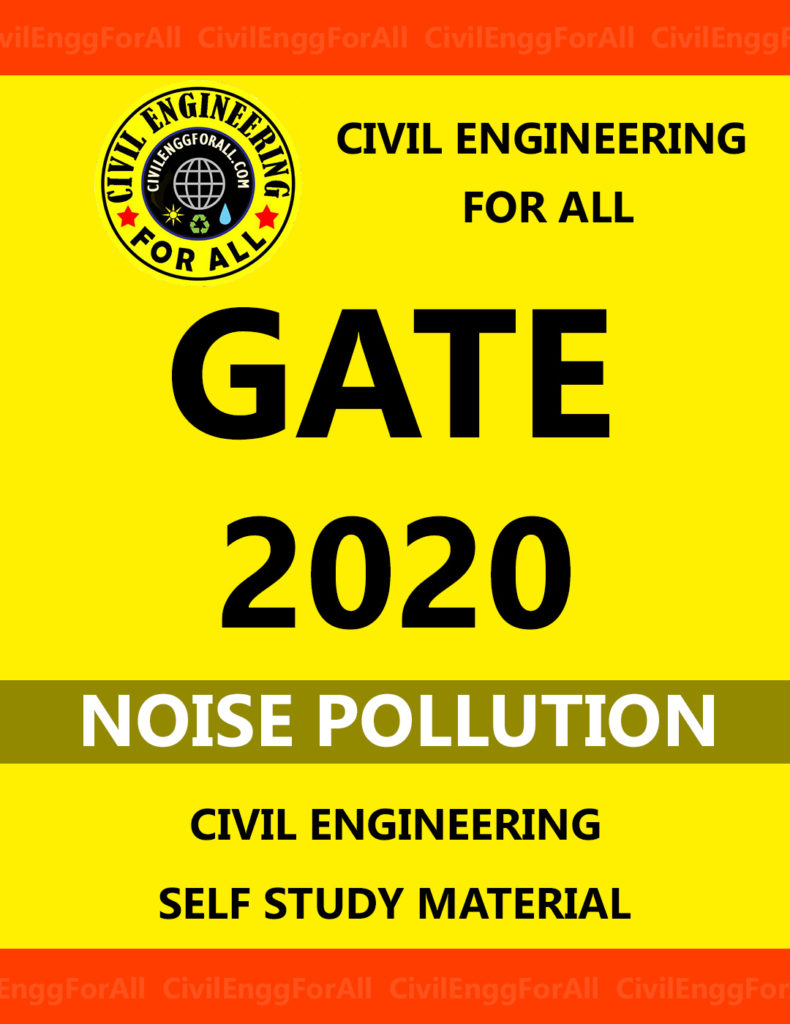

CONTENTS
- Characteristics of Sound and Its Measurement
- Power of Sound (W)
- Sound Intensity (I)
- Levels of Noise
- Averaging Sound Pressure Levels
- Noise Rating Systems
- Noise Level Standards
- Sources of Noise
- Noise Abatement and Control

Noise is a characteristic of an environment, and is usually defined as unwanted sound. The unwanted sound certainly produces several undesirable effects on our body health, and therefore, called pollutant. Noise can also be defined as that unwanted sound pollutant which produces undesirable physiological and psychological effects in an individual, by interfering with one’s social activities like work, rest, recreation, sleep, etc. It is a generalised fact that noise of sufficient intensity and duration can induce health problems like temporary and some-times permanent hearing loss, besides causing several other diseases like general annoyance, irritation, disturbance, headaches, insomnia, fatigue, mental torture, nausea, high blood pressure, high pulse rate, greater perspiration, etc.
IES MASTER CIVIL ENGINEERING GATE STUDY MATERIALS PDF: DOWNLOAD LINK
ACE ACADEMY CIVIL ENGINEERING GATE STUDY MATERIALS PDF: DOWNLOAD LINK
CHARACTERISTICS OF SOUND AND ITS MEASUREMENT
Sound is produced in the environment by alternating pressure changes in the air, and is caused by vibrations of solid objects or separation of fluids, as they pass over, around, or through holes in solid objects. These vibrations cause the surrounding air to undergo compression, then rarefaction, again compression, then rarefaction, and so on. Such alternating compression and rarefaction of the surrounding air produces sound waves which propagate in the form of sinusoidal path as shown below


Fig. (a) shows time between successive peaks or troughs of oscillation called period (P), and its inverse, which represents the number of times a peak arrives in one second, is called frequency (f); P = 1/f
Fig. (b) shows distance between successive peaks or troughs is called wave length (λ), which is related to frequency (f) by the relation . λ = C.1/f where C is velocity of the sound wave
Power of Sound (W) – It is defined as the rate of doing work by a travelling sound wave in the direction of propagation of the wave. Thus energy transmitted by a sound wave in the direction of its propagation is defined as its power, and is represented in watts in S.I. units.
Sound Intensity (I) – It is defined as sound power averaged over the time per unit area normal to the direction of propagation of the sound wave. Intensity and Power of a sound wave are related by the equation
I = W/α where, I = intensity of sound wave in watt/m2 , W = power of sound wave in watts, α = unit area perpendicular to the direction of wave motion.
ACE ACADEMY CIVIL ENGINEERING GATE HANDWRITTEN CLASSROOM NOTES PDF: DOWNLOAD LINK
MADE EASY CIVIL ENGINEERING GATE HANDWRITTEN CLASSROOM NOTES PDF: DOWNLOAD LINK
LEVELS OF NOISE
Sound pressure of the faintest sound that can be heard by a normal healthy individual is about 20 micro-pascal (μ-Pa), and loudest sound produced by a Saturn rocket at the lift off stage is about 200 Pa. This astronomical variation in sound pressure (varying from 20 μPa to 200 Pa) is usually avoided by expressing sound pressure on a scale based on the log of the ratio of the measured sound pressure and a reference standard pressure. Measurements on this scale are called levels.
Sound Level, L = log10[Q/Qo] (bels)
where, Q = measured quantity of sound pressure, or sound power, or sound intensity Q0 = reference standard quantity of sound pressure, or sound power, or sound intensity, as case may be L = sound level in bels (B)
Types of Sound
- Continuous Noise – I t is an uninterrupted sound level that varies less than 5 dB during entire period of observation. e.g. running fan
- Intermittent Noise – It is a noise which continues for more than 1 second and is then interrupted for more than 1 second. e.g. drilling machine used by a dentist
- Impulse Noise – It is characterised by a change of sound pressure of atleast 40 dB within 0.5 second with a duration of less than one second. e.g. firing of a weapon
NOISE LEVEL STANDARDS
The prescribed noise standards generally put a limit either on Leq or LN values. Different such limiting values are then prescribed for different areas. e.g. VIP and silence areas will impose lower limiting values as compared to those for commercial or industrial areas within a city. Usually prescribed limiting Leq values for different areas of a city is of the order of 40 to 70 decibels. Table show two sets of noise standards: These levels are above those that would be absolutely harmless, but are below those of many existing highways. Table below show two sets of noise standards: These levels are above those that would be absolutely harmless, but are below those of many existing highways.

Table below has been evolved by U.S. Environmental Protection Agency and shows the limiting noise levels for different types of areas for indoor as well as outdoor noises, that should be maintained for adequately safeguarding public health over long periods (accounting annual average levels in Leq values).

ENVIRONMENTAL ENGINEERING ACE ACADEMY GATE CLASSROOM NOTES PDF: DOWNLOAD LINK
ENVIRONMENTAL ENGINEERING MADE EASY GATE CLASSROOM NOTES PDF: DOWNLOAD LINK
SOURCES OF NOISE

- Traffic Noise – It including air traffic, road traffic, and sea-shore and inland water traffic Amount and type of noise produced by traffic is largely dependent upon type of traffic.
- Industrial Noise – Noise is the essential by-product of industry; its intensity and nature being dependent upon type of the industry. Industrial noises are usually produced by rotating, reciprocating or any other types of machinery, or by high pressure high velocity gases, liquids or vapour involved in the industrial processes. The usual noise level of the industries is of the order of 60 to 95 decibels.
- Noise produced by Other sources – Several other human activities, such as blaring of loud-speakers and sirens, shouting of hawkers, playing of children, general life and activity, ringing of temple and church bells, etc. do produce noises of different levels, tones and spectra.
NOISE ABATEMENT AND CONTROL
Exposure of mankind day-by-day is increasing noise. Nuisance must be reduced and abated, if its adverse effects on human health are to be controlled. The society must therefore be protected from harmful effects of noise by devising and implementing ways and means for the abatement of noises. There are certain noises which can be kept under control by legal laws and ordinances, and there are others which have to be damped and attenuated by the use of good technology and town planning. e.g., the noises produced by motor vehicles can be controlled to some extent by proper maintenance of vehicles, which can be ensured only by prescribing maximum permissible noise levels for different types of automobiles, through Motor Vehicles Act. Similarly, industrial noises can be brought under the control of Factories Act by specifying maximum permissible noise levels and other checks. Similarly, public blaring of loud-speakers and playing of radio sets at loud levels can be prevented by general legal laws of public nuisance or laws specifically made for noise pollution. Yet however, there exist several other noises which have become part and parcel of our modern life. All such noises are to be reduced by better design technology to be used in the modern day gadgets like fans, air-conditioners, washing machines, refrigerators, mixers and grinders, etc. Another very important method for abating noise effects on mankind is to use proper town planning techniques, and thus, to ensure construction of houses and offices away from the major sources of noise.
Proper segregation, zoning and separation of residential complexes from the commercial and industrial ones, by means of physical barriers, roads, railway lines, parks or green belts, do constitute an important aspect of such good town planning. The noises produced by automobiles and trains, being the biggest noise nuisance in a modern city life, can be abated by construction of walls on both sides of roads and railway lines. Raising of such obstructions and barriers in between the noise sources (automobiles) and residences, may considerably reduce the noise levels reaching the residences. Attenuation of up to 15 decibels is possible in this manner.
NOISE POLLUTION CIVIL ENGINEERING GATE 2020 STUDY MATERIAL FREE DOWNLOAD PDF
DOWNLOAD LINK : CLICK HERE
PASSWORD : CivilEnggForAll
OTHER USEFUL BOOKS
- CIVIL ENGINEERING TEXTBOOKS WITH DOWNLOAD LINKS
- IES MASTER CIVIL ENGINEERING GATE STUDY MATERIALS PDF
- ACE ACADEMY CIVIL ENGINEERING GATE STUDY MATERIALS PDF
- BUILDING MATERIALS – MOCK TEST 1 (QUICK)
- TELANGANA STATE PUBLIC SERVICE COMMISSION – ASSISTANT ENGINEER 2023 – TSPSC AE 2023 CIVIL ENGINEERING EXAM SOLVED PAPER WITH EXPLANATIONS PDF FREE DOWNLOAD
- SSC JE 2023 CIVIL ENGINEERING (CPWD/CWC/MES) EXAM SOLVED PAPER PDF FREE DOWNLOAD
- BIHAR PUBLIC SERVICE COMMISSION ASSISTANT ENGINEER (BPSC AE) 2022 CIVIL ENGINEERING EXAM SOLVED PAPER WITH EXPLANATIONS PDF
- NHPC (NATIONAL HYDROELECTIC POWER CORPORATION) JUNIOR ENGINEER NHPC JE 2022 CIVIL ENGINEERING EXAM SOLVED PAPER PDF FREE DOWNLOAD

Leave a Reply